
Xylophanes tyndarus is a moth of the family Sphingidae first described by Jean Baptiste Boisduval in 1875. It is distributed from Mexico and Belize to Brazil and westward into Bolivia.

Xylophanes ceratomioides is a moth of the family Sphingidae. It is known from Mexico, Belize, Costa Rica, French Guiana, Bolivia, Argentina and Venezuela, down into southern Brazil. Rare vagrants have been found up to southern Arizona.

Xylophanes eumedon is a moth of the family Sphingidae. It is known from Mexico.
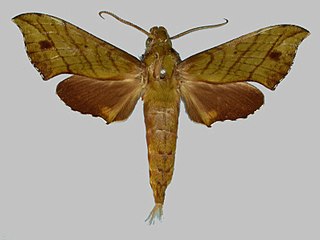
Xylophanes adalia is a moth of the family Sphingidae first described by Herbert Druce in 1881. It is known from Panama, Costa Rica north to south-eastern Belize and Mexico. In the south, it ranges as far as Ecuador.

Xylophanes belti is a moth of the family Sphingidae first described by Herbert Druce in 1878.
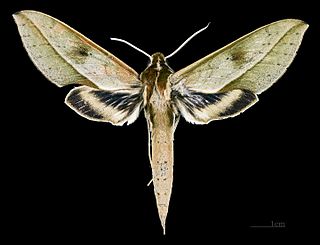
Xylophanes cyrene is a moth of the family Sphingidae first described by Herbert Druce in 1881. It is found in Mexico, Panama, Costa Rica, Guatemala, Belize and south to Oxapampa in Peru.
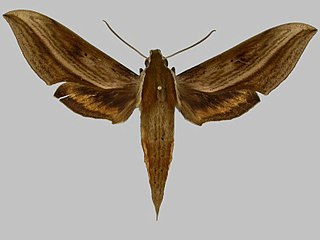
Xylophanes damocrita is a moth of the family Sphingidae first described by Herbert Druce in 1894. It is known from Mexico.
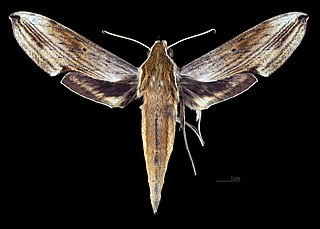
Xylophanes dolius is a moth of the family Sphingidae. It is known from Ecuador and Bolivia.
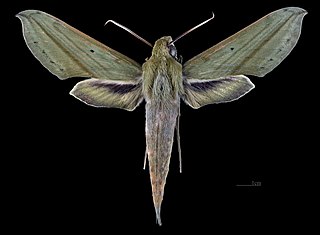
Xylophanes elara is a moth of the family Sphingidae first described by Herbert Druce in 1878. It is known from Paraguay, Suriname, Venezuela, Bolivia and Brazil.
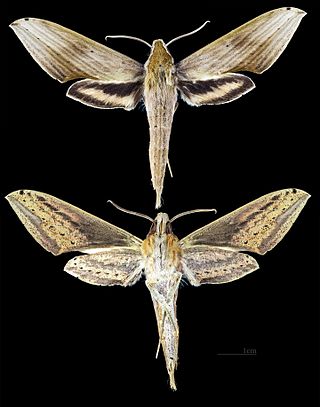
Xylophanes libya, the Libya sphinx, is a moth of the family Sphingidae. The species was first described by Herbert Druce in 1878. It is known from southern Texas, Mexico, Belize, Guatemala, Panama and from Venezuela south and west to Bolivia and Paraguay.
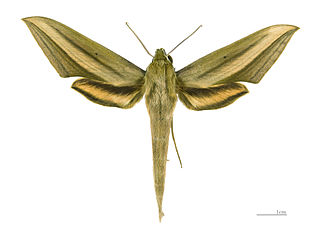
Xylophanes loelia is a moth of the family Sphingidae first described by Herbert Druce in 1878.

Xylophanes media is a moth of the family Sphingidae first described by Walter Rothschild and Karl Jordan in 1903.
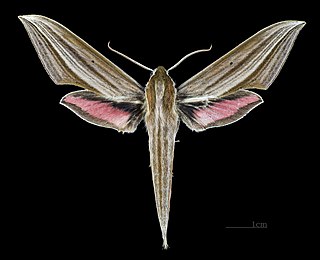
Xylophanes neoptolemus is a moth of the family Sphingidae.

Xylophanes resta is a moth of the family Sphingidae.

Xylophanes rhodina is a moth of the family Sphingidae. It is known from Panama and Costa Rica.

Xylophanes rhodotus is a moth of the family Sphingidae. It is known from Peru and Bolivia.
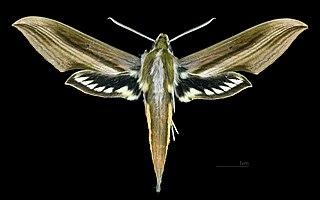
Xylophanes schreiteri is a moth of the family Sphingidae. It is known from Argentina and Bolivia.

Xylophanes thyelia is a moth of the family Sphingidae. The species was first described by Carl Linnaeus in his 1758 10th edition of Systema Naturae.

Xylophanes xylobotes is a moth of the family Sphingidae. It is known from Peru.

Eupyrrhoglossum sagra, the Cuban sphinx, is a moth of the family Sphingidae. The species was first described by Felipe Poey in 1832. It is known from tropical and subtropical lowlands in Cuba and from Mexico and Belize to Guatemala, Costa Rica, Bolivia, Paraguay, Argentina and Uruguay. Occasionally, strays are found in Florida.
























